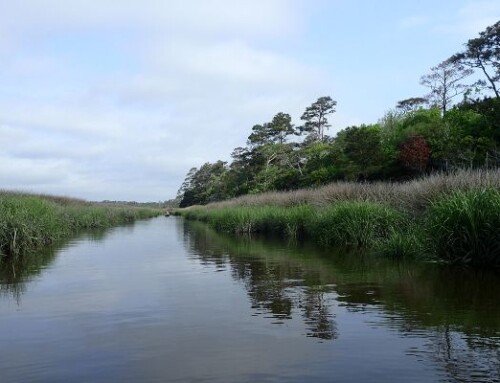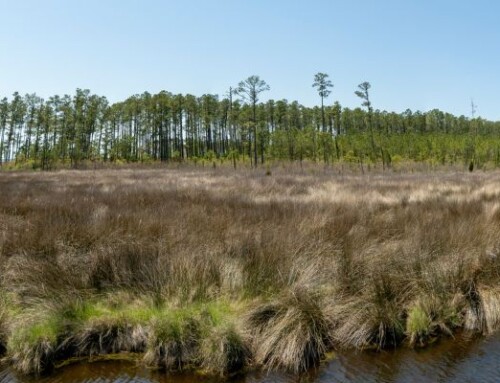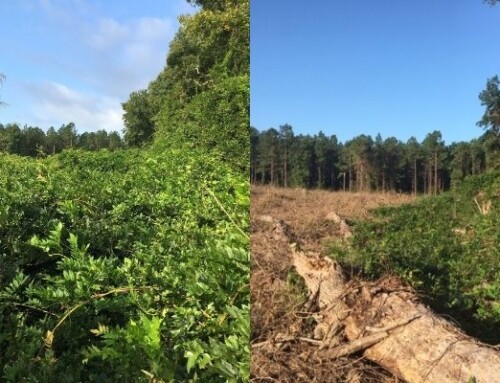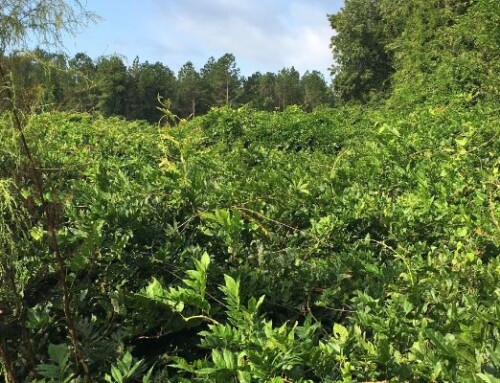Coastal Land Trust Purchases Vast Floodplain Forest on the Cape Fear River in Navassa
The Coastal Land Trust is pleased to announce the purchase of 1,048 acres along 3.5 miles of the Cape Fear River and 1.5 miles of Indian Creek in Brunswick County, in the Town of Navassa.
“The area is a vast floodplain forest rich with wildlife,” said Coastal Land Trust Executive Director Walker Golder. “Protecting this forest will help to reduce the risk and severity of flooding to downstream communities, protect habitat for wildlife, and enhance water quality.”
The conserved land is the heart of Dollison’s Swamp, a site identified as “very ecologically significant” by the North Carolina Natural Heritage Program. This designation is due to its age and near-pristine bottomland hardwood and cypress-gum forest. It was also identified as a high-priority site for protection by the Town of Navassa and the Coastal Land Trust as culturally and ecologically significant.
The area’s floodplain forest, creeks, and freshwater marsh provide important nursery areas for anadromous fish such as striped bass, American and hickory shad, and possibly Atlantic sturgeon (a federally listed Threatened species); provide habitat for the rare Rafinesque’s Big-eared Bat (Threatened species) and Southeastern Bat (Species of Special Concern); and serve as important habitat for bottomland forest-dependent wading birds, waterfowl, raptors and songbirds, like the Prothonotary Warbler.
“This is a special place,” said Janice Allen, the Coastal Land Trust’s Director of Land Protection. “The wild and wonderful Dollison’s Swamp of Brunswick County hosts countless buttressed cypress and swamp tupelo trees, many of them ancient. Fishermen, kayakers, and boaters regularly enjoy this scenic and secluded spot – and downstream, greater Wilmington area residents reap its myriad benefits because the swamp moderates floodwaters, filters the water, and provides critical habitat for fish and wildlife.”
Funding for the purchase was generously provided through the National Oceanic and Atmospheric Administration (NOAA) Damage Assessment, Remediation and Restoration Program and an Enviva Forest Conservation Fund grant. This acquisition is part of the Kerr-McGee Natural Resource Damage Assessment and Restoration program, with funding administered through the National Fish and Wildlife Foundation.
“This project was selected for funding because of its proximity to the Kerr-McGee site and because of the tract’s conservation significance,” said Krista McCraken of NOAA, one of the federal agencies involved in directing use of the Kerr-McGee settlement funds. “Being able to protect these unique habitats from future development benefits communities throughout the watershed.”
“This forest connects to a 1,337-acre property held under conservation easement by the Coastal Land Trust and adds to more than 14,000 acres the Coastal Land Trust has already protected along the Lower Cape Fear River,” said Golder. “Protecting this watershed remains one of our highest priorities.”
The property will be protected forever by the Coastal Land Trust and managed as a natural area.
Your generosity makes projects like this a reality. Donate today.
******************************************************************************
About North Carolina Coastal Land Trust
The North Carolina Coastal Land Trust enriches coastal communities of North Carolina through conservation of natural areas and working lands, education, and the promotion of good land stewardship. Founded in 1992, the Coastal Land Trust has saved more than 80,000 acres of places with scenic, recreational, historic and/or ecological value, and has offices in Wilmington, New Bern and Elizabeth City. www.CoastalLandTrust.org.
About Enviva Forest Conservation Fund
Enviva created its fund, which is administered by the U.S. Endowment for Forestry and Communities, to help protect sensitive bottomland forests in North Carolina and Virginia.
Kerr-McGee Natural Resource Damage Assessment
The Kerr-McGee Natural Resource Damage Assessment and Restoration process aims to restore and preserve unique and vulnerable habitats in the Lower Cape Fear River watershed to compensate the public for natural resource injuries stemming from the Kerr-McGee Chemical Corp. Superfund site. The restoration process is guided by the Natural Resource Trustees (National Oceanic and Atmospheric Administration, US Fish and Wildlife Service, and North Carolina Department of Environmental Quality); and in accordance with the Comprehensive Environmental Response, Compensation, and Liability Act. For more information on the restoration efforts around the Kerr-McGee Chemical Corp. Superfund site, visit https://darrp.noaa.gov/hazardous-waste/kerr-mcgee-chemical-corp-tronox.
National Fish and Wildlife Foundation Disclaimer
The views and conclusions contained in this document are those of the authors and should not be interpreted as representing the opinions or policies of the U.S. Government or National Fish and Wildlife Foundation or its funding sources.
Turn up your volume and take a virtual float on Indian Creek into Dollison’s Swamp:









